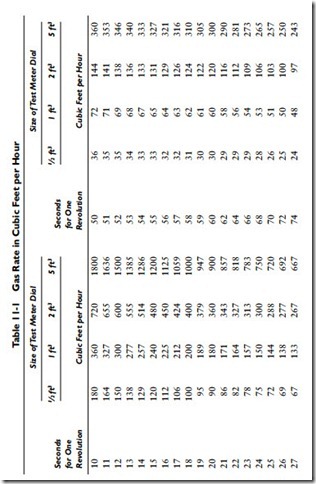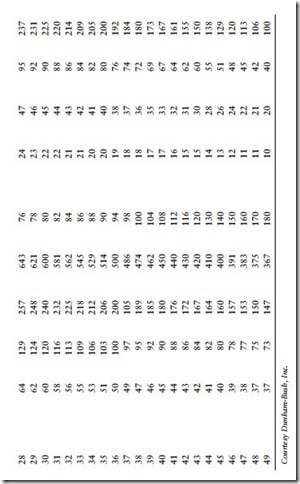Pilot Burner Adjustment
It is sometimes necessary to adjust the pilot flame. On some combination gas controls, a pilot adjustment screw is provided for this purpose. On units using natural gas, the screw should be adjusted until the pilot flame completely envelops the thermocouple. If propane gas is used, the screw should be wide open.
Sometimes a pilot gas regulator is used on a furnace to control pressures in areas where gas pressure variation is great. The pilot valve is placed in wide open position, and pilot flame adjustments are made by adjusting the gas pressure regulator.
Gas Input Adjustment
The gas input of a furnace must not be greater than that specified on the rating plate. However, it is permissible to reduce the gas input to a minimum of 80 percent of the rated input in order to balance the load.
The gas input can be checked by timing the flow through the meter. The procedure for clocking the meter is as follows:
1. Turn off all gas units connected through the meter except the furnace. The main burners of the furnace must be on for the timing check.
2. Time one complete revolution of the hand (or disk) on the meter. The hand should be the one with the smallest cubic footage per revolution (usually 1⁄2 or 1 ft3 per revolution on small meters and 5 ft3 on large meters).
3. Using the size of the test meter dial (1⁄2, 1, 2, or 5 ft3) and the number of seconds per revolution, determine the cubic feet per hour from the appropriate column in Table 11-1.
4. Determine the actual Btu/h input of the burner by multiplying the cubic feet per hour rate (obtained in Step 3) by the Btu per cubic feet of gas (obtained from the local gas company).
By the way of example, let’s assume that you have contacted the local gas company and they have given you a value of 1040 Btu per cubic foot. When you clock the meter, you find that it takes exactly 18 seconds for the hand to make one complete revolution on the 1⁄2 ft3 meter dial. With this information, turn to Table 11-1 and find 18 seconds in the extreme left-hand column. Opposite the value
18 seconds under the 1⁄2 ft3 column heading read 100 ft3. The rest is simple multiplication:
100 ft3 per hour X 1040 Btu per ft3 = 104,000 Btu/h
If the Btu/h rate is not within 5 percent of the desired value, change the burner orifices or adjust the pressure regulator. Pressure regulator setting changes are used only for minor adjustments in Btu input. Major adjustments are made by changing the burner orifices.
When making adjustments, remember the following: Btu input may never be less than the minimum or more than the maximum on the rating plate.
There is no meter to clock on furnaces fired with propane. The burner orifices on these units are sized to give the proper rate at 11 in W.C. (water column) manifold pressure.
After the correct Btu input rate has been determined, adjust the burner for the most efficient flame characteristics (see Combustion Air Adjustment).

